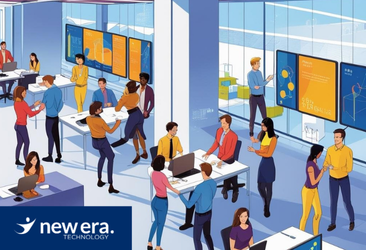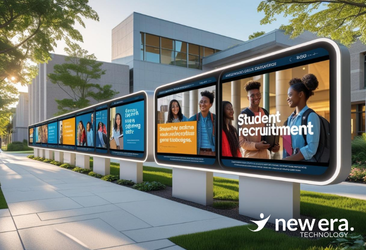Whether you’re designing a spacious conference room or more compact huddle spaces, there are essential considerations for achieving excellence in workspace design for hybrid teams.
What kind of meeting spaces do hybrid employees want?
Hybrid employees, have specific preferences when it comes to meeting spaces. Understanding these preferences is crucial for organisations looking to create a hybrid work environment that caters to the needs of modern work and promotes effective collaboration.
Workspace design for hybrid teams
Creating multipurpose video collaboration spaces is a strategic endeavor that combines creativity with hybrid meeting technology. Organisations are increasingly investing in adaptive workspaces that can serve multiple functions within a single room.
Whether you’re designing a spacious conference room or more compact huddle spaces, there are essential considerations for achieving excellence in workspace design for hybrid teams.
Flexibility is key
First and foremost, hybrid employees want flexibility in their meeting spaces. As well as flexible meeting rooms, they need adaptive workspaces that can easily accommodate a variety of collaboration events, allowing for both in-person and virtual participants. They also want privacy. But not all the time.
Creating this level of flexibility in current office spaces can be a challenge, especially given how many organisations have scaled back on real estate in response to the hybrid work movement.
However, making one collaboration space ‘do more’ is an accelerating trend. You can achieve maximum ROI on your video rooms and virtual meeting solutions by installing things like retractable screens and movable partitions to allow the space to be used as one large area or divided into smaller meeting facilities but remember to consider screen positioning and size relative to different events held in the space.
Once you have this flexibility in room configuration, you can think about the technology you need to implement to support this.
Hybrid meeting technology solutions that do not impact quality
This means having the necessary technology and equipment, such as video conferencing systems, high-quality cameras, and microphones, to ensure seamless communication and collaboration between remote and in-office team members.
Hybrid workers don’t just want this, they now expect it. Crystal clear audio and visual excellence is paramount, so investing in audio equipment that optimises sound distribution in response to the room configuration, as well as high-res displays is a minimum.
Most organisations are going above this and are integrating user-friendly controls for balanced inputs, adjustable lighting and ‘smart building’ technology that automatically adjusts the room ambience in response to the participants.
Finding a balance between technology and ease of use is not to be underestimated though. Don’t forget that simple technology drives user adoption!
Remember, collaboration spaces should align technology with aesthetics. Hybrid employees appreciate meeting spaces that prioritise comfort and ergonomics. As they may spend extended periods in meetings, having comfortable seating options and ergonomic furniture is essential to support their well-being and productivity. Additionally, providing amenities like adjustable lighting, temperature control, and noise reduction features can contribute to a conducive meeting environment.
By considering the preferences and needs of hybrid employees, organisations can design collaborative workspaces that facilitate effective collaboration, regardless of the participants’ location or work arrangement.
Parity of user experience and employee wellbeing in hybrid work
The user experience for any meeting participant is of the utmost importance. A negative experience will have a negative impact on the meeting outcome.
Employees value hybrid workspaces that promote equal participation and engagement. Implementing inclusive meeting practices, such as providing remote participants with equal visibility and opportunities to contribute, can help create a sense of equity and fairness. Additionally, incorporating collaboration tools, such as virtual whiteboards and real-time document editing, enables all participants to actively engage and collaborate on shared tasks and projects.
Do not forget about accessibility. Ensure you provide accessible seating arrangements, hearing assistance solutions and facilitate captions or sign language interpretation for those who need it.
Comfort of meeting spaces
Remember, collaboration spaces should align technology with aesthetics. Hybrid employees appreciate meeting spaces that prioritise comfort and ergonomics. As they may spend extended periods in meetings, having comfortable seating options and ergonomic furniture is essential to support their well-being and productivity. Additionally, providing amenities like adjustable lighting, temperature control, and noise reduction features can contribute to a conducive meeting environment.
Summary
By considering the preferences and needs of hybrid employees, organisations can design collaborative workspaces that facilitate effective collaboration, regardless of the participants’ location or work arrangement.
Hybrid employees appreciate meeting spaces that offer easy access to necessary resources and information. Providing seamless connectivity, reliable Wi-Fi, and access to shared files and documents ensures that participants can quickly access the information they need during meetings. This reduces downtime and enables efficient decision-making and problem-solving.

 Australia
Australia Canada
Canada LATAM
LATAM New Zealand
New Zealand UAE
UAE United States
United States








